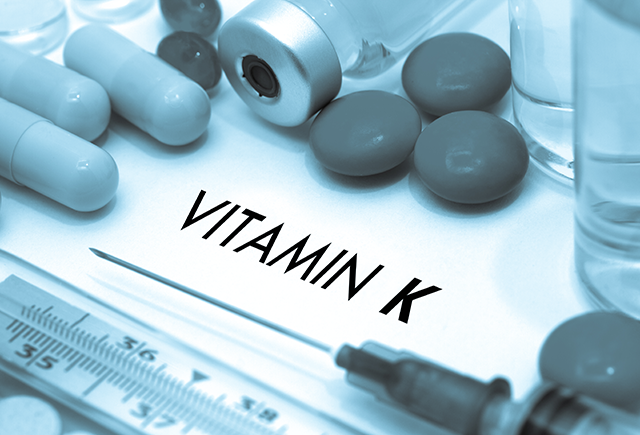 Parler
Parler Gab
Gab
Cognitive health linked to physical activity levels
For the study, researchers examined data from over 8,500 British people born in 1970. The health of the participants was tracked throughout childhood and into adulthood. The participants were told to fill in detailed health, background and lifestyle questionnaires. They also wore activity trackers for at least 10 consecutive hours daily for up to seven days. (Related: Healthy habits that can boost brain health.) During the study period, the volunteers were given different cognitive tests for verbal memory, such as immediate and delayed tasks where they needed to recall certain words. The participants were also tested on their executive function or their ability to "plan, focus, multitask and remember instructions." The scores for each test were added together to compute the overall global score for memory and executive function. Data from the activity trackers revealed that the volunteers clocked an average of 51 minutes of MVPA daily. The data also revealed that within 24 hours, the volunteers took part in:- Five hours and 42 minutes of light-intensity physical activity
- Nine hours and 16 minutes of stationary behavior
- Eight hours and 11 minutes of sleep
Moderate aerobic activity vs. vigorous activity
If you're an adult between the ages of 19 and 64, you should exercise every day because studies have found that engaging in physical activity at least once or twice a week can reduce heart disease or stroke risk. Before starting a new exercise routine, make sure your chosen activity and its intensity are appropriate for your current fitness level. If you're not sure where to start, try spreading your exercise sessions evenly over four to five days a week or every day. You can also try to reduce the time you spend sitting or lying down and break up long periods of not moving, like sitting at your desk, with some activity such as stretching or walking. You can also start strengthening activities that work for all the major muscle groups, like your abdomen, chest, back, shoulders, arms, legs and hips at least two days a week. Try to do at least 150 minutes of moderate activity a week or 75 minutes of vigorous activity every week. If you have a busy work schedule, you can achieve your weekly activity target with several short sessions of very vigorous activity. Alternatively, you can combine moderate, vigorous and very vigorous activity to meet your fitness goals. Moderate aerobic activities to try Moderate activity will raise your heart rate and it will make you breathe faster and feel warmer. If you're not sure, you can tell if you're working at a moderate level if you can still talk, but not sing. Here are some examples of moderate-intensity activities to help boost your brain health:- Brisk walking
- Dancing
- Doubles tennis
- Hiking
- Pushing a lawn mower
- Riding a bike
- Rollerblading
- Water aerobics
- Aerobics
- Gymnastics
- Martial arts
- Riding a bike fast or on hills
- Running
- Skipping
- Swimming
- Walking up the stairs
- Circuit training
- Interval running
- Lifting heavy weights
- Running up stairs
- Spinning classes
- Sprinting up hills
Tips for incorporating more exercise into your daily routine
But what if you're too busy to go to the gym to exercise? Staying healthy requires a bit of sacrifice and a lot of discipline, but it's all worth it if you want to live longer and age gracefully. Here are some tips on how to get your additional six minutes of exercise if you have a busy schedule: Wake up early If possible, set your alarm early so you can exercise before going to work or tackling your chores for the day. This doesn't mean you have to sacrifice sleep to exercise, but you can try to reset your sleep schedule and wake up earlier. Turn your commute into a workout If you don't have enough time to go on a run after work, pack your things in a bag and jog home from work instead. If you can't jog or run, you can also try biking to work or getting off your bus or train a few stops earlier. Power walk up the stairs Using the stairs is better than using the elevator, but you can upgrade your walking by gradually increasing your speed and the number of stairs you take in one minute. Wear comfortable shoes and take two steps at once, but only if you're able to do it safely, so you can target your glutes more. For more on the health benefits of exercise, visit HealingArts.news. Watch the video below to find out how mushrooms can help boost your brain health. This video is from the Groovy Bee channel on Brighteon.com.More related stories:
Study: Strength training for at least 30 to 60 minutes a week helps boost longevity. Walking for 5 minutes every half hour can help you stay healthy if you sit all day, reveals study. Having a healthy, active lifestyle found to lower the risk of developing Alzheimer's. Sources include: DailyMail.co.uk NHS.uk Shape.com Brighteon.comThese 7 herbs can help you through life’s aches and pains
By Olivia Cook // Share
Beneficial enzymes in barley grass can boost gut health and protect against cancer
By Zoey Sky // Share
8 Science-backed health benefits of vitamin K
By Olivia Cook // Share
Study suggests ants can be trained to detect cancer in urine
By Zoey Sky // Share
Skincare hacks: Use homemade sugar scrub for radiant-looking skin
By Zoey Sky // Share
Governments continue to obscure COVID-19 vaccine data amid rising concerns over excess deaths
By patricklewis // Share
Tech giant Microsoft backs EXTINCTION with its support of carbon capture programs
By ramontomeydw // Share
Germany to resume arms exports to Israel despite repeated ceasefire violations
By isabelle // Share










